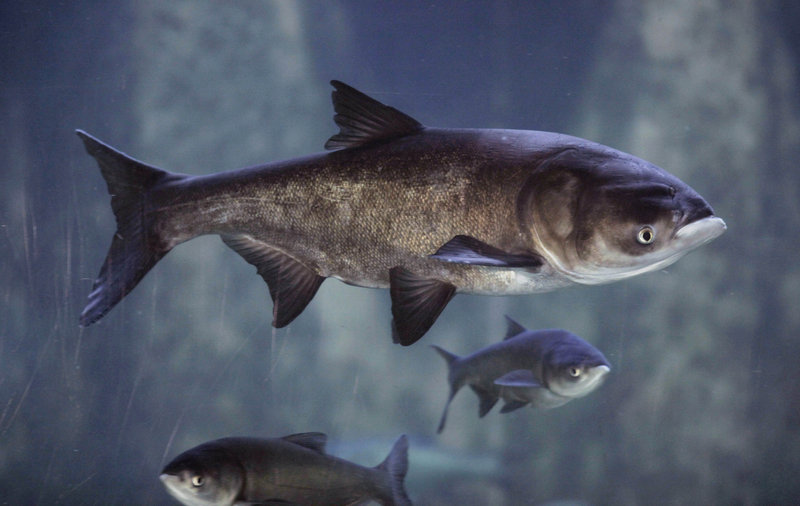CHICAGO – Asian carp may be a plankton-gobbling nuisance threatening the Great Lakes, but Illinois officials on Thursday expressed hope of changing that perception one bite at a time.
The Illinois Department of Natural Resources held a public tasting event starring a Louisiana chef-turned-advocate to start a campaign that may lead to feeding the invasive species to the growing number of people facing hunger.
“Fish translates to one thing: food,” said Chef Philippe Parola. “It’s one of the greatest natural resources we have.”
He sauteed fillets and deep-fried fish cakes for a menu that included sweet potatoes, green beans and banana pudding. The fillets — fried in butter with salt, pepper and a sprinkle of Creole spices — had a very mild taste, like tilapia. But several big bones were scattered throughout the flaky flesh.
The fish cakes, served with a cheese and cream sauce, were savory and moist, and compared favorably with a restaurant-quality appetizer.
Dozens attended the community dinner in Chicago to learn more about the fish that’s better known for its ability to grow to 100 pounds, its propensity to sail out of the water when startled and a voracious appetite that could devastate the Great Lakes.
“There was so much negativity about this fish,” said Sharon Hendrix, 67. “It’s good. It’s so light and delicate, not what I was expecting.”
That sentiment was shared by Hendrix’s 73-year-old friend, Alice White.
“It’s very good, flavorful,” she said.
Even young taste testers — many unaware they were eating Asian carp — gave it two thumbs up.
Bakia Johnson, 15, compared it to salmon, which she says she loves.
“I think it was excellent, well-seasoned,” she said.
The idea to exploit Asian carp’s nutritional value — nutritionists say it’s a good protein source, low in mercury and high in omega-3 fatty acids — has major obstacles in Illinois. While it’s eaten in China and high-end restaurants, among other places, there’s no infrastructure yet for netting the fish in mass quantities, cleaning and distributing it to the masses. Officials also recognize they face an even more intangible challenge: the fish has a bad public image.
Parola said people just need to be exposed to it.
“This fish is not any uglier than any other fish,” he noted.
Getting carp to soup kitchens and food pantries is months off, said Tracy Smith, a director for Feeding Illinois, which supplies food banks and is helping on the project. Illinois officials don’t know the most feasible way to dole out the carp: minced, boneless fillets or some type of pre-cooked product.
Also, at least when it comes to soup kitchens and food pantries, Illinois officials appear to have their work cut out for them. Recent visitors to Our Lady of Grace Food Pantry in Chicago were skeptical. The pantry puts canned goods, meat and bread in the plastic food bags it gives out. If carp were to make its way there, workers would include it with the meat, leaving people to figure out how to cook the fish on their own.
“I wouldn’t eat it,” Vincent Williams, 49, an unemployed former bank worker, said with a look of disgust on his face.
Asian carp were imported from China in the early 1970s to cleanse algae from Southern fish farms and sewage treatment plants. They escaped into the Mississippi River and have spread across dozens of waterways.
If Asian carp ever reached the Great Lakes, they could decimate food supplies and starve out native species, disrupting a $7 billion fishing industry.
Send questions/comments to the editors.



Success. Please wait for the page to reload. If the page does not reload within 5 seconds, please refresh the page.
Enter your email and password to access comments.
Hi, to comment on stories you must . This profile is in addition to your subscription and website login.
Already have a commenting profile? .
Invalid username/password.
Please check your email to confirm and complete your registration.
Only subscribers are eligible to post comments. Please subscribe or login first for digital access. Here’s why.
Use the form below to reset your password. When you've submitted your account email, we will send an email with a reset code.